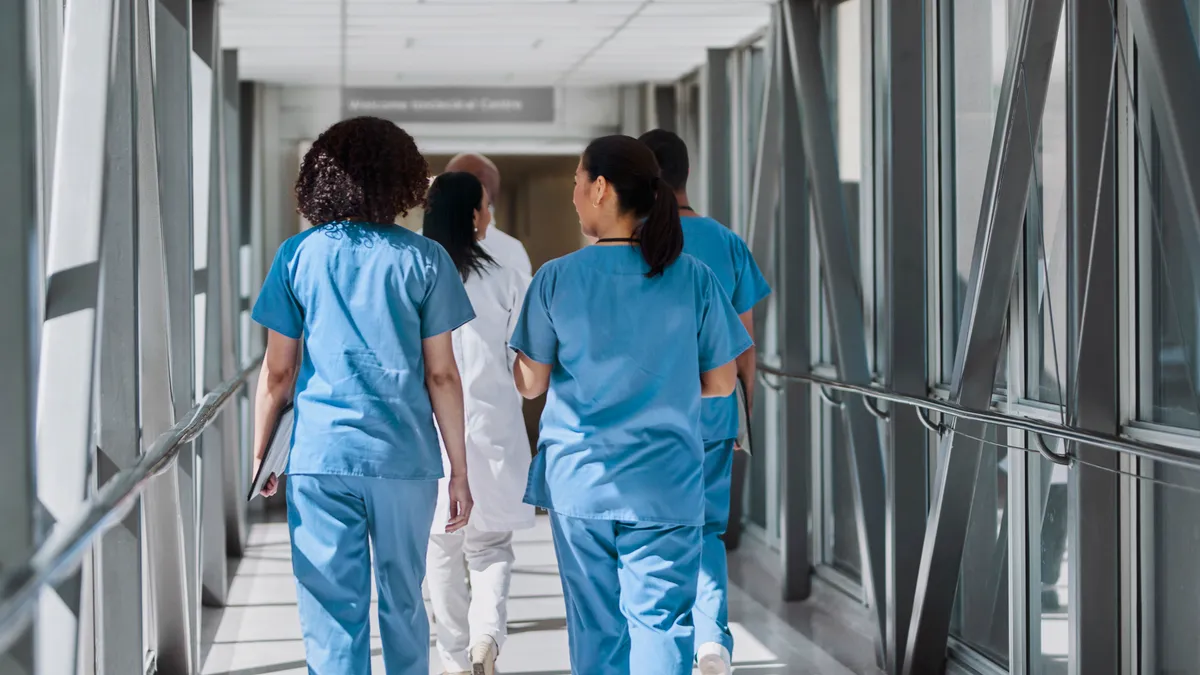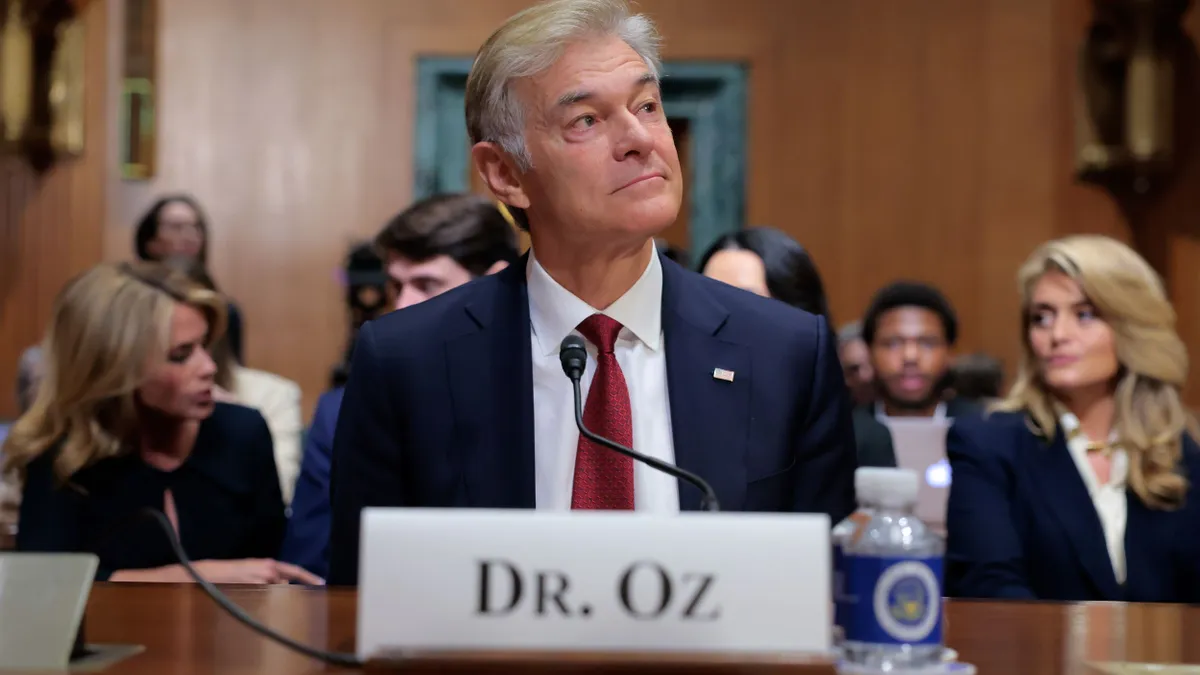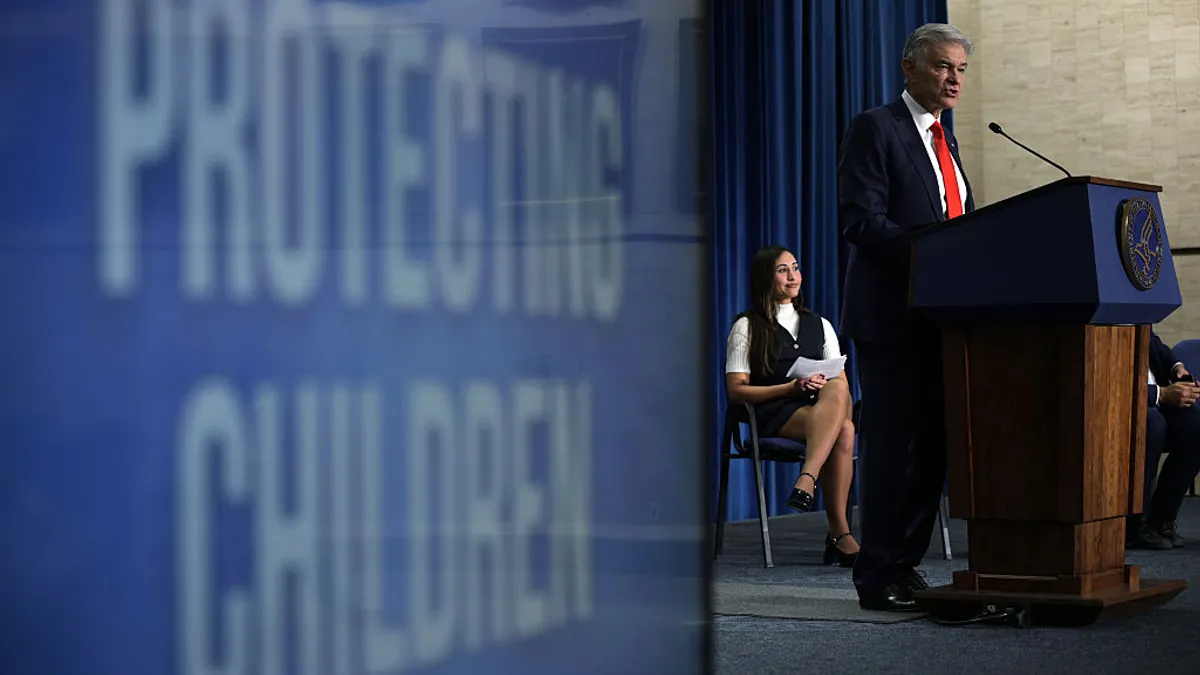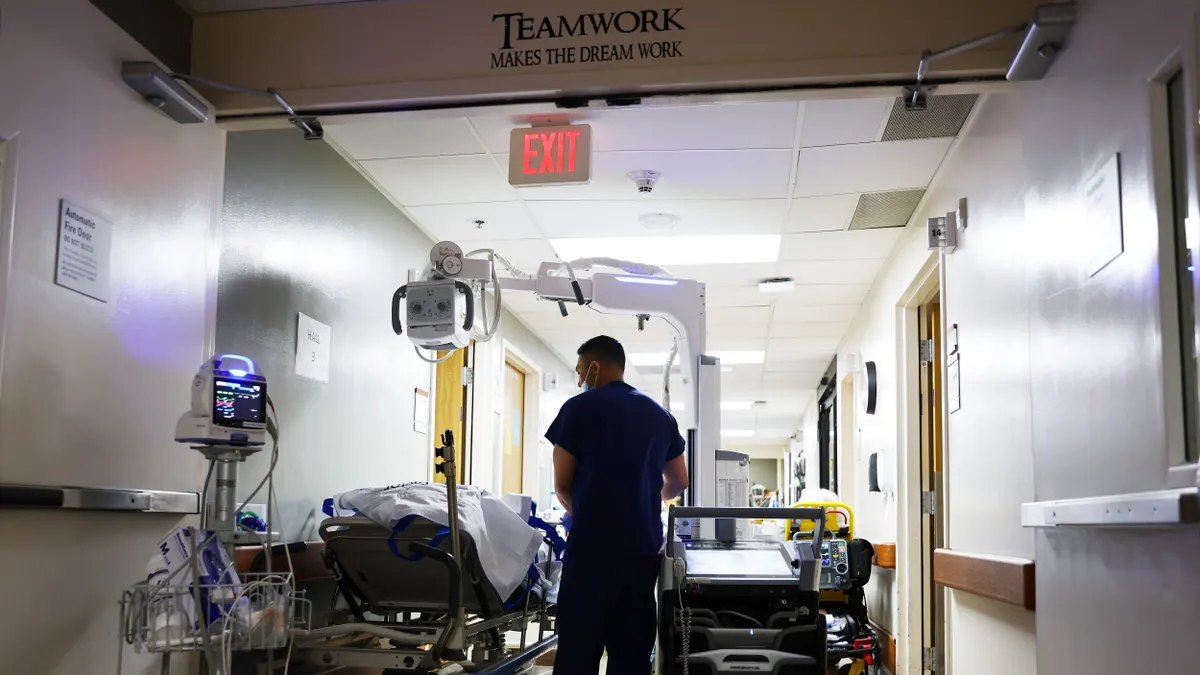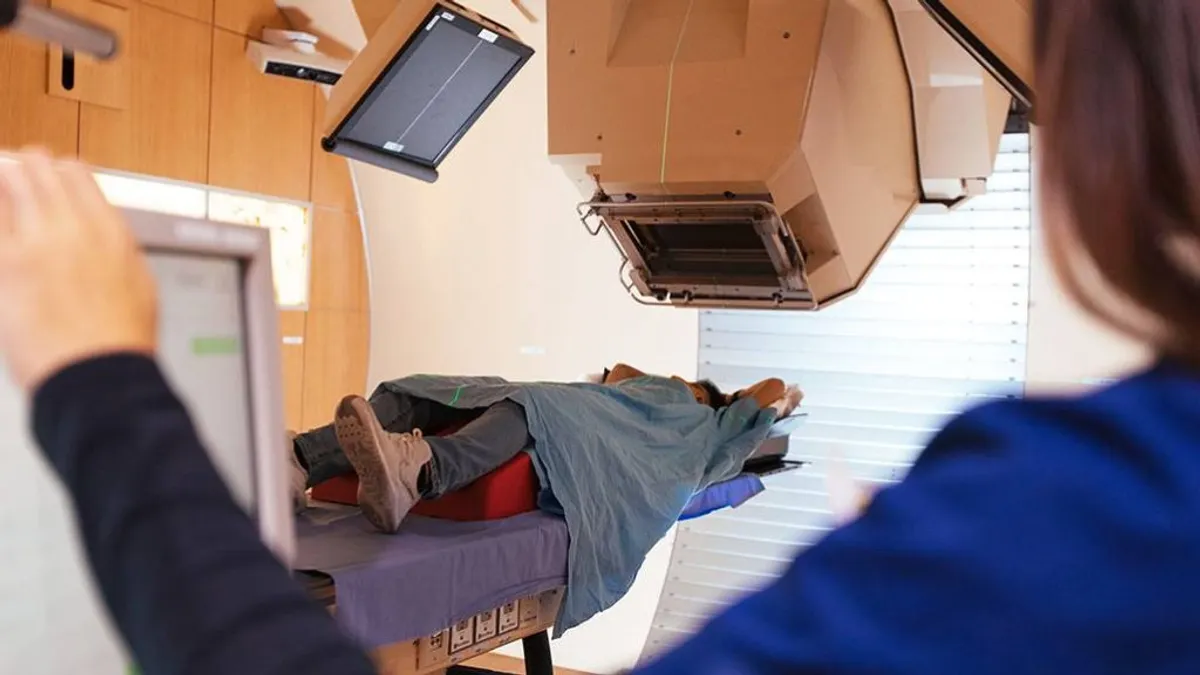The Trump administration’s plan to dramatically overhaul the H-1B visa application process is sparking anxiety among healthcare providers, who say their access to critical international talent could be threatened.
The H-1B program allows U.S. employers to hire foreign workers in specialty fields, including in healthcare. Although President Donald Trump has made illegal immigration reform a priority during his second administration, experts told Healthcare Dive that the sudden changes to the decades-old program have sent healthcare providers scrambling to understand the impact to their workforces.
Under the program, the government allows employers to sponsor a fixed number of visas per year to fill critical positions. It’s typically been considered a win-win, allowing companies to innovate while not overwhelming the job market with foreign talent. Since 2004, Congress has capped the number of H-1B visas at 85,000.
In fiscal year 2024, healthcare received nearly 8,500 new foreign workers through the program, according to an analysis from the Washington Post. The visas have helped promote innovation in health IT and have been heralded by medical groups — including the American Hospital Association and American Medical Association — as a vital resource to helping address widespread workforce shortages.
However, since Friday, the administration has handed down a one-two punch, announcing changes that AMA President Dr. Bobby Mukkamala said risk “shutting off” the healthcare industry’s talent pipeline, especially in rural and underserved areas.
The president first issued an executive order hiking the administrative cost of applying to the H-1B program from between $2,000 to $5,000 to as much as $100,000 per new applicant. The government says it will offer “case-by-case” exemptions when hiring for certain roles serves the “national interest.” Such exemptions may include doctors, according to a report from Bloomberg.
Then, on Tuesday, the administration said it would overhaul the visa’s lottery process. The lottery kicks off when demand for new visas exceeds the 85,000 annual cap set by Congress — something that’s happened every year for more than a decade. Previously, applicants were selected at random from the lottery. Under the new process, the government intends to weight applications to offer higher paid and more skilled foreign employees a better chance at entry.
Such a change would disadvantage applications from early career family physicians and international medical graduates, who are likely to earn less money upon applying for a visa, said a spokesperson for the American Academy of Family Physicians.
The spokesperson said international medical graduates make up more than 22% of active family physicians nationwide and are more likely to practice in rural areas, where labor shortages are most severe. The medical group worries that undercutting health systems’ ability to hire these workers could ultimately compromise care.
“Nearly 21 million Americans live in areas of the U.S. where foreign-trained physicians account for at least half of all physicians,” a spokesperson for the American Academy of Family Physicians said.
Paying the heightened fees likely isn’t an option for most providers, said Chris Musillo, a Cincinnati-based attorney specializing in healthcare immigration.
“These are often nonprofit organizations. They don’t have that kind of money lying around,” Musillo said.
For now, Sarah Hawk, immigration and global mobility chair at law firm Barnes & Thornburg, said most of her clients are in a “holding pattern” on hiring and residency decisions as they wait for more information. She expects the H-1B visa changes will likely be litigated.
“With this administration, it’s shock, it’s chaos, and then they walk it back,” Hawk said. “And they’ll do the carve outs for certain industries and maybe litigation will also cause injunction... but I do think that this proclamation is telling U.S. employers that the government does not want the H-1B workers to take U.S. workers’ jobs. That’s their concern, and so they’re trying to make it as restrictive as possible.”
H-1B visas are crucial for hiring workers in healthcare because there aren’t enough domestic workers to fill positions, Musillo said. The industry has struggled to educate, recruit and retain workers for years, due to a shortage of educators, pervasive burnout and a mismatch between supply and demand as Baby Boomers age.
Watchdog groups have advocated for increased immigration to help stem healthcare workforce shortages, and as recently as this month, there’s been bipartisan support in Congress for policies that would leverage unused visas to bring international nurses and doctors to the country.
“No one credibly believes that there’s a single American nurse who wants a job who doesn’t have one,” Musillo said. “No U.S. worker is being hurt by this program. And still, it seems like the administration’s solution is to turn off the faucet to what has traditionally been a huge chunk of the American nursing workforce.”

